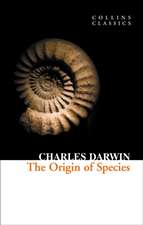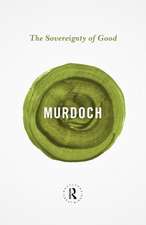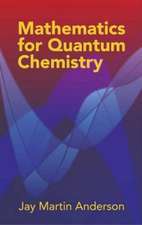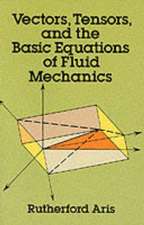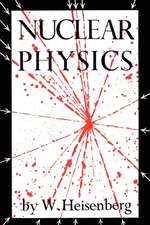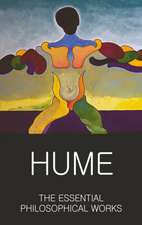Relativity: The Special and the General Theory
Autor Albert Einstein Nigel Calder Traducere de Robert W. Lawsonen Limba Engleză Paperback – 30 iun 2006 – vârsta de la 18 ani
- First time in Penguin Classics
- New introduction by bestselling science author Nigel Calder
Preț: 81.89 lei
Nou
15.67€ • 16.76$ • 13.07£
Carte disponibilă
Livrare economică 28 martie-11 aprilie
Specificații
ISBN-10: 0143039822
Pagini: 129
Dimensiuni: 132 x 198 x 11 mm
Greutate: 0.13 kg
Editura: Penguin Books
Cuprins
Introduction by Nigel Calder
Suggestions for Further Reading
Preface by Albert Einstein
Part I: The Special Theory of Relativity
1. Physical Meaning of Geometrical Propositions
2. The System of Co-ordinates
3. Space and Time in Classical Mechanics
4. The Galileian System of Co-ordinates
5. The Principle of Relativity (in the Restricted Sense)
6. The Theorem of the Addition of Velocities Employed in Classical Mechanics
7. The Apparent Incompatibility of the Law of Propagation of Light with the Principle of Relativity
8. On the Idea of Time in Physics
9. The Relativity of Simultaneity
10. On the Relativity of the Conception of Distance
11. The Lorentz Transformation
12. The Behaviour of Measuring-Rods and Clocks in Motion
13. Theorem of the Addition of the Velocities. The Experiment of Fizeau
14. The Heuristic Value of the Theory of Relativity
15. General Results of the Theory
16. Experience and the Special Theory of Relativity
17. Minkowski's Four-Dimensional Space
Part II: The General Theory of Relativity
18. Special and General Principle of Relativity
19. The Gravitational Field
20. The Equality of Inertial and Gravitational Mass as an Argument for the General Postulate of Relativity
21. In What Respects Are the Foundations of Classical Mechanics and of the Special Theory of Relativity Unsatisfactory?
22. A Few Inferences from the Genral Principle of Relativity
23. Behaviour of Clocks and Measuring-Rods on a Rotating Body of Reference
24. Euclidean and Non-Euclidean Continuum
25. Gaussian Co-ordinates
26. The Space-Time Continuum of the Special Theory of Relativity Considered as a Euclidean Continuum
27. The Space-Time Continuum of the General Theory of Relativity Is Not a Euclidean Continuum
28. Exact Formulation of the General Principle of Relativity
29. The Solution of the Problem of Gravitation on the Basis of the General Principle of Relativity
Part III: Considerations on the Universe as a Whole
30. Cosmological Difficulties of Newton's Theory
31. The Possibility of a "Finite" and Yet "Unbounded" Universe
32. The Structure of Space According to the General Theory of Relativity
Appendices
1. Simple Derivation of the Lorentz Transformation
2. Minkowski's Four-Dimensional Space ("World")
3. The Experimental Confirmation of the General Theory of Relativity
(a) Motion of the Perihelion of Mercury
(b) Deflection of Light by a Gravitational Field
(c) Displacement of Spectral Lines towards the Red
Index
Notă biografică
Nigel Calder, educated as a physicist at Cambridge University, began his full-time writing career on the original staff of New Scientist magazine. His most recent book is the bestselling Einstein's Universe.
Descriere
2010 Reprint of 1920 First English Edition. First English translation of Einstein's theory of relativity. In this work Einstein intended, as far as possible, to give an exact insight into the theory of Relativity to those readers who, from a general and scientific philosophical point of view, are interested in the theory, but who are not conversant with the mathematical apparatus of theoretical physics. The theory of relativity enriched physics and astronomy during the 20th century. When first published, relativity superseded a 200-year-old theory of mechanics elucidated by Isaac Newton. It changed perceptions. For example, it overturned the concept of motion from Newton's day, into all motion is relative. Time was no longer uniform and absolute, as related to everyday experience. Furthermore, no longer could physics be understood as space by itself, and time by itself. Instead, an added dimension had to be taken into account with curved space-time. Time now depended on velocity, and contraction became a fundamental consequence at appropriate speeds.
Recenzii
'Much of the book is a delight.' - Stephen Battersby, New Scientist
'[Einstein] is a far better populariser of science than Stephen Hawking ... you'll feel as though you have a ringside seat at a revolution in human understanding.' - Guardian

